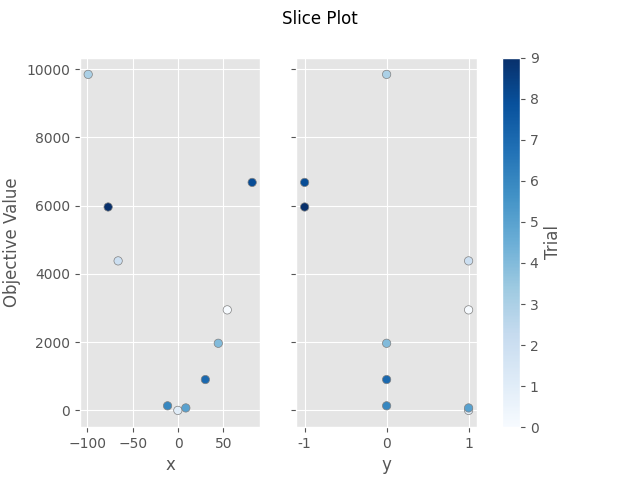注意
跳转至末尾 下载完整示例代码。
plot_slice
- optuna.visualization.matplotlib.plot_slice(study, params=None, *, target=None, target_name='Objective Value')[source]
使用 Matplotlib 绘制研究中的参数关系切片图。
另请参阅
请参阅
optuna.visualization.plot_slice()以获取示例。- 参数:
- 返回值:
一个
matplotlib.axes.Axes对象。- 返回类型:
注意
在 v2.2.0 中作为实验性功能添加。接口在后续版本中可能会在未提前通知的情况下更改。请参阅 https://github.com/optuna/optuna/releases/tag/v2.2.0。
以下代码片段展示了如何绘制参数关系的切片图。

/home/docs/checkouts/readthedocs.org/user_builds/optuna/checkouts/stable/docs/visualization_matplotlib_examples/optuna.visualization.matplotlib.slice.py:25: ExperimentalWarning:
plot_slice is experimental (supported from v2.2.0). The interface can change in the future.
array([<Axes: xlabel='x', ylabel='Objective Value'>, <Axes: xlabel='y'>],
dtype=object)
import optuna
def objective(trial):
x = trial.suggest_float("x", -100, 100)
y = trial.suggest_categorical("y", [-1, 0, 1])
return x**2 + y
sampler = optuna.samplers.TPESampler(seed=10)
study = optuna.create_study(sampler=sampler)
study.optimize(objective, n_trials=10)
optuna.visualization.matplotlib.plot_slice(study, params=["x", "y"])
脚本总运行时间: (0 分 0.107 秒)